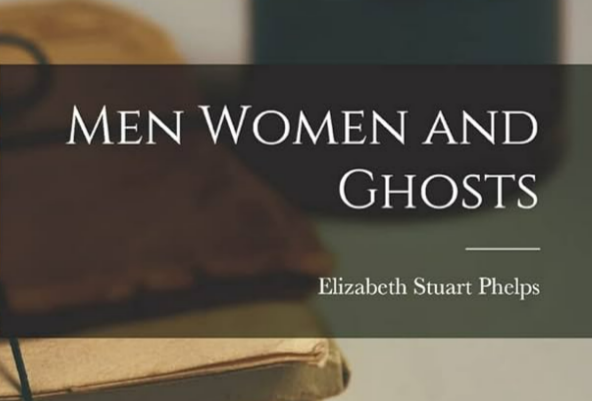Towns in Colour
byIn this chapter titled Towns in Colour, introduces a vivid meditation on urban life, emotion, and perception through a tapestry of contrasting images. The narrative invites readers to navigate a series of scenes where mood, space, and color reflect both external realities and internal responses. From the start, the setting—a darkened church echoing with Latin hymns—establishes a tone of solemn ritual and human helplessness in the face of death. As priests chant and incense thickens the air, the body at the altar remains unmoved, highlighting how ceremony often fails to bridge the existential divide. The candles’ glow and the organ’s growl merge into a sensory dirge, each element emphasizing the symbolic futility of sacred acts when confronted with silence from the departed. This moment marks the beginning of a journey through layered, symbolic townscapes that blend sound, color, and social reflection to explore how humans process life, death, and the spaces in between.
When the narrative shifts from this sacred gloom to a shop window, the tone pivots sharply. Towns in Colour suddenly offers an image both startling and invigorating—red slippers gleaming behind the glass, defying the grey sleet swirling on the sidewalk outside. Their hue is intense, almost rebellious, bursting with vitality amid the lifelessness of a rainy street. The red bleeds into the viewer’s consciousness like a memory refusing to fade, a vivid mark of desire and life against an otherwise drab routine. These slippers don’t merely catch the eye—they claim emotional territory, suggesting how even small flashes of beauty can disrupt emotional dullness. That brief encounter mirrors how ordinary objects—if rendered in contrast—can evoke longing, even hope, within an otherwise colorless routine.
From this moment of saturated visual intensity, the story carries the reader into the structured monotony of Thompson’s Lunch Room. White dominates this scene—not the pure white of innocence, but the functional, impersonal white of tile, napkins, and porcelain. Every motion, from slicing bread to serving coffee, is crisp and mechanical, echoing the tempo of daily urban existence. The color palette here is deliberate; it signifies not serenity but sterility, a sense of sanitized order that renders the lunchroom both reliable and lifeless. Here, people don’t connect—they move. Even their gestures feel rehearsed, muted by routine. This space represents a kind of emotional detachment common in fast-paced city life, where rituals replace reflection and color is subdued into functionality.
The narrative’s journey continues into the glowing decadence of An Opera House, where gold reigns—not just in the gilded balconies and decorative flourishes but in the mannerisms of the audience. In this environment, color signifies class. The gold is not warm or celebratory—it is heavy, ornate, and alienating. Every detail reflects not artistic appreciation but wealth performing itself. The opera’s soaring arias are drowned beneath the weight of diamonds, tailored coats, and the dull roar of social comparison. Rather than art elevating its audience, the atmosphere turns art into a backdrop for vanity. This gold-laden world isolates more than it connects, showing how the pursuit of beauty can sometimes be smothered by spectacle and pretense.
After the blinding shine fades, the story takes readers into the rhythm of State Street, rain-soaked and filled with movement. Umbrellas tilt, coats cling to legs, and footsteps beat a path into anonymity. The city here isn’t hostile—it’s indifferent. The people blur into a collective tide, suggesting how urban spaces can both crowd and isolate. There is no spotlight in the rain—only motion, repetition, and the cold murmur of commerce. It’s a portrait of a society in motion without direction, where moments pass unnoticed and connection dissolves beneath the hum of streetcars and wet shoes. This is a town without color, or perhaps one where color has been washed away.
Then, the tone softens in An Aquarium, a space where movement becomes silent and color turns fluid, luminous, and alive. Here, in filtered light and water-etched glass, fish glide with a calm that seems untouched by the noise outside. The urban world fades as the aquarium becomes a contemplative refuge—a space where time slows, emotions steady, and one can simply observe without judgment. Blues, silvers, and greens blend in harmony, creating an environment of quiet transcendence. The contrast to the bustling city is stark: here, beauty does not demand attention, it invites reflection. It reminds the reader that even within artificial boundaries, there can be a closeness to nature, and in that closeness, a rare kind of peace.
Through each scene, Towns in Colour builds a nuanced commentary on modern life’s emotional and aesthetic landscapes. The chapter uses color not as ornament but as psychological insight—red for desire, white for sterility, gold for pretension, grey for monotony, and blue for serenity. These shifting palettes allow the city to become more than setting—it becomes character, mirroring the complexity of those who live within it. What begins in the shadow of death ends in quiet life beneath the surface of water, suggesting that meaning is found not in the noise of spectacle but in quiet, often overlooked corners of experience. Through this richly layered journey, the narrative affirms that color, whether literal or symbolic, remains one of the truest reflections of what it means to feel human in a crowded world.

